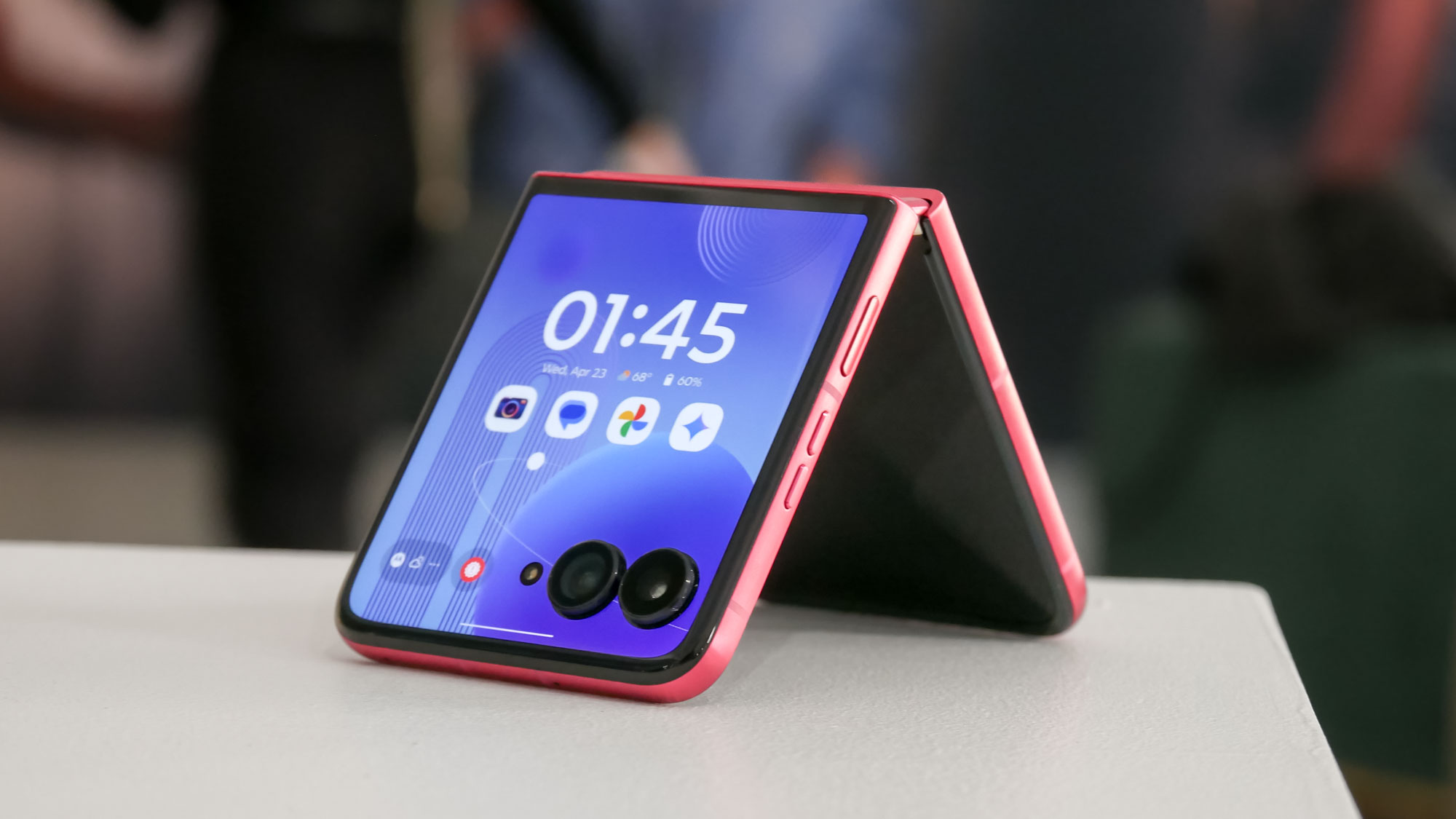Tom's Guide Verdict
The Xperia XZ1 packs plenty of power and the latest version of Android, but this phone's bulky design, small battery and lack of a fingerprint sensor make it feel decidedly dated.
Pros
- +
Powerful processor
- +
Headphone jack
- +
Already offers Android 8.0 Oreo
- +
3D Creator is fun
Cons
- -
No fingerprint sensor in U.S. model
- -
Dated design
- -
Middling battery life compared to leading flagships
Why you can trust Tom's Guide
Editors' Note: We updated this review on Nov. 20 to note that Sony has since come out with Xperia XZ2 and XZ3 phones. If you're looking for a more compact phone with a screen about the same size as the Xperia XZ1's 5.2-inch display, look at our guide to the best small phones currently available.
You hear the sentiment often these days that most smartphones look too similar. But you'd never mistake Sony's newest range-topping Xperia XZ1 for anything else on the market. Sony has picked up right where it left off with 2016's Xperia XZ family, eschewing modern design trends and features for an unapologetically sharp, flat slab of a flagship that keeps the bells and whistles to a minimum.
The result is nothing if not distinctive. Unfortunately, the Xperia XZ1 doesn't always stand out for the right reasons.
Specs
| Price | $699 |
| OS | Android 8.0 Oreo |
| Screen Size (Resolution) | 5.2 inches (1920 x 1080) LCD |
| CPU | Qualcomm Snapdragon 835 |
| RAM | 4GB |
| Storage | 64GB |
| microSD Slot? | Yes |
| Rear Camera | 19-MP f/2.0 |
| Front Camera | 13-MP f/2.0 |
| Battery Life (Hrs:Mins) | 9:45 |
| Water Resistance | IP68 |
| Size | 5.8 x 2.9 x 0.3 inches |
| Weight | 5.5 ounces |
Price and availability
The Xperia XZ1 debuted at $699 and comes in just one configuration: 64GB of storage paired with 4GB of RAM. In the United States, you can buy the device unlocked from Best Buy and Amazon. It's compatible with only GSM networks, including T-Mobile and AT&T.
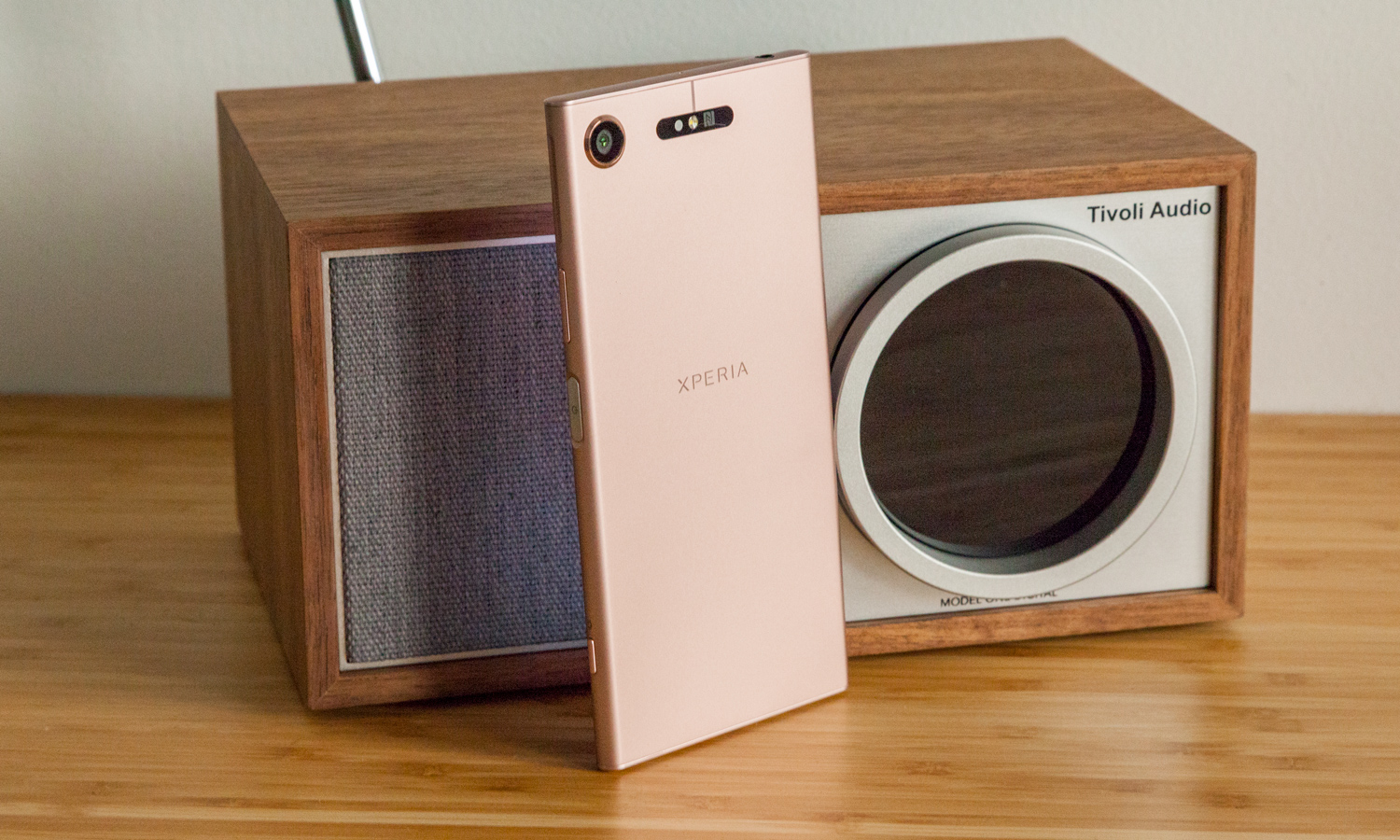
The XZ1's price has fallen since we originally posted this review earlier this year, as Sony has come out with newer flagships, including one — the Xperia XZ2 Compact — that we actually prefer to the XZ1, thanks to its more modern design and above-average battery life.
MORE: Best Small Phones: Top Picks 5 inches or Less
Design: Time to switch it up
While many new smartphones have opted for wider and nearly bezel-free screens, Sony's Xperia XZ1 defies this shift with its striking rectangular form and generous bezels above and below the display. The result is a handset that resembles a shrunken version of the old Xperia Z4 tablet from way back in 2015, as well as generations of bygone Sony flagships.
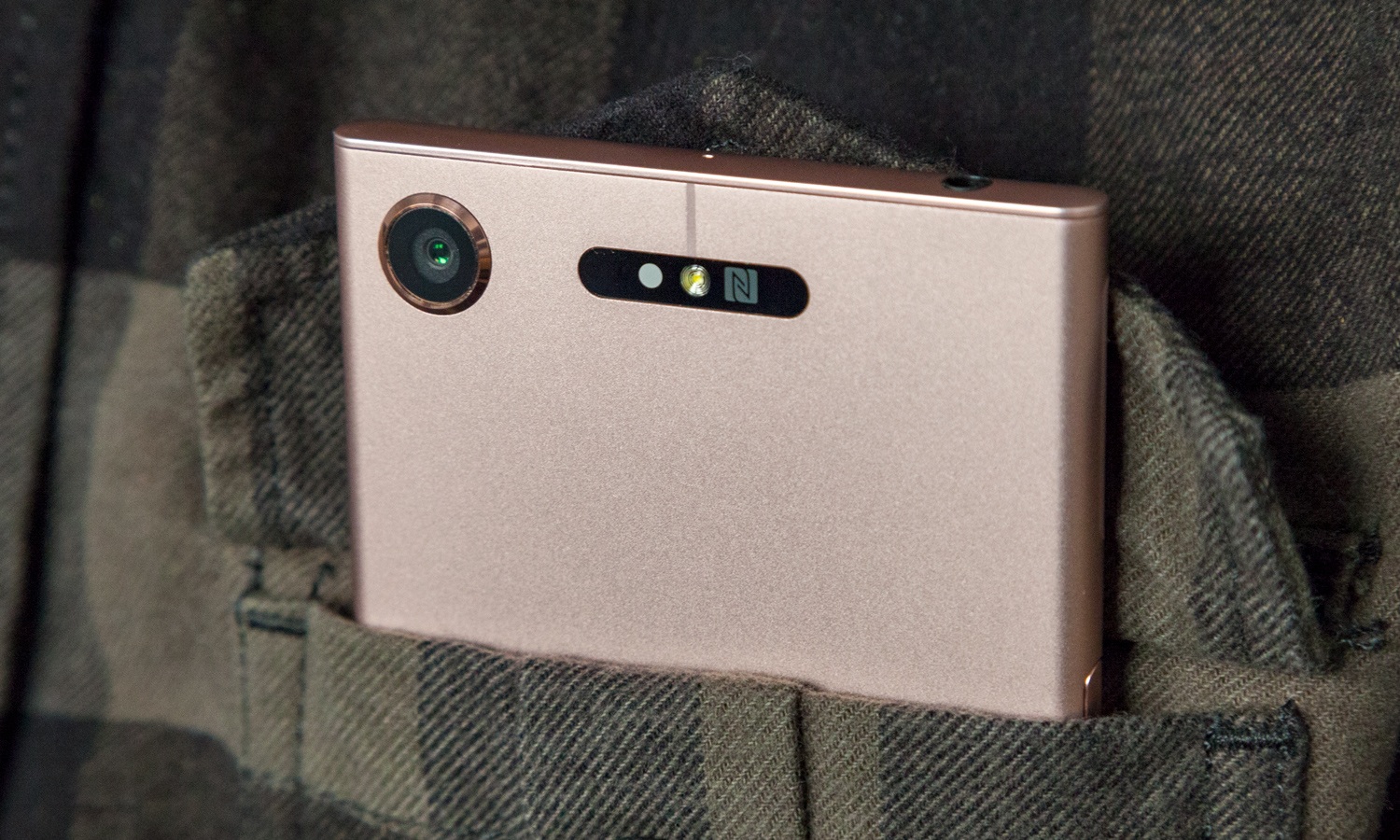
The Venus Pink Xperia XZ1 we tested measures 5.8 x 2.9 x 0.3 inches, features a durable exterior made from anodized aluminum and is rated IP68 water resistant. A sheet of Gorilla Glass 5 protects the screen but falls away slightly at the perimeter to mesh with the device's curved sides. Along the phone's right side, you'll find a recessed power button — a hallmark of Sony's flagships — as well as a volume rocker that is simply too short and small to help you discern up from down. At least the top edge of the phone bears a headphone jack, something disappearing from flagships these days.
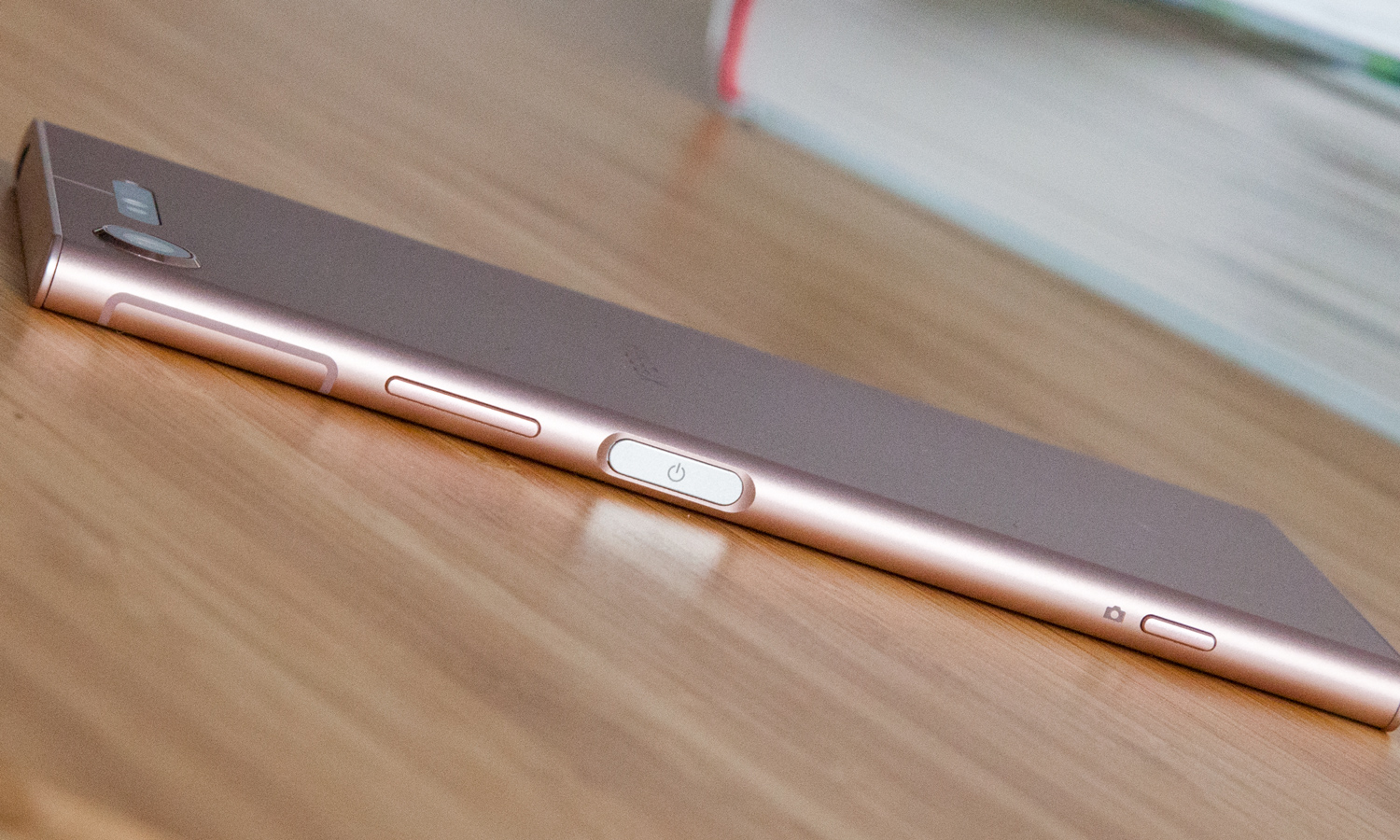
One not-so-little thing about that power button: In markets outside the United States, that key doubles as a fingerprint sensor. Sony has once again disabled that layer of security for U.S. customers. Whatever the reason, it was an inexcusable omission in last year's Xperia XZ line that sadly hasn't changed.
The Xperia XZ1 is also available in Moonlit Blue, Warm Silver and black. Interestingly, Sony colored the glass to match the hue of the aluminum on all three nonblack models. We wish we saw this more often from companies like Apple and Google, as it gives the front of the device some added personality.
The XZ1 is wider than the Galaxy S8 (5.9 x 2.7 x 0.3 inches) by 0.2 inches, so getting a comfortable hold is difficult if you have small hands. The S8 has a bigger screen than the XZ1 but a different aspect ratio, so it winds up being narrower than Sony's phone.
If you can manage to fit the XZ1 in your pants pocket, you may feel a jab from one of the phone's sharp edges, but that ultimately depends on how tight your pants are. (No judgement!) The looser pockets you'll find on sweaters or jackets do perfectly fine in containing this imposing handset.
Surprisingly, the Xperia's long frame is fairly lightweight, coming in at only 5.4 ounces. That's 1.4 ounces lighter than Sony's Xperia XZ Premium (6.8 ounces) and a hair lighter than the Galaxy S8 (5.5 ounces).
Display: Pretty and pretty dated
The 5.2-inch, 1080p LCD display inside the Xperia XZ1 may sound unremarkable on paper, but it's a nice enough panel for a high-end handset. Just don't expect it to blow you away like the OLED screens featured on some of its competitors.
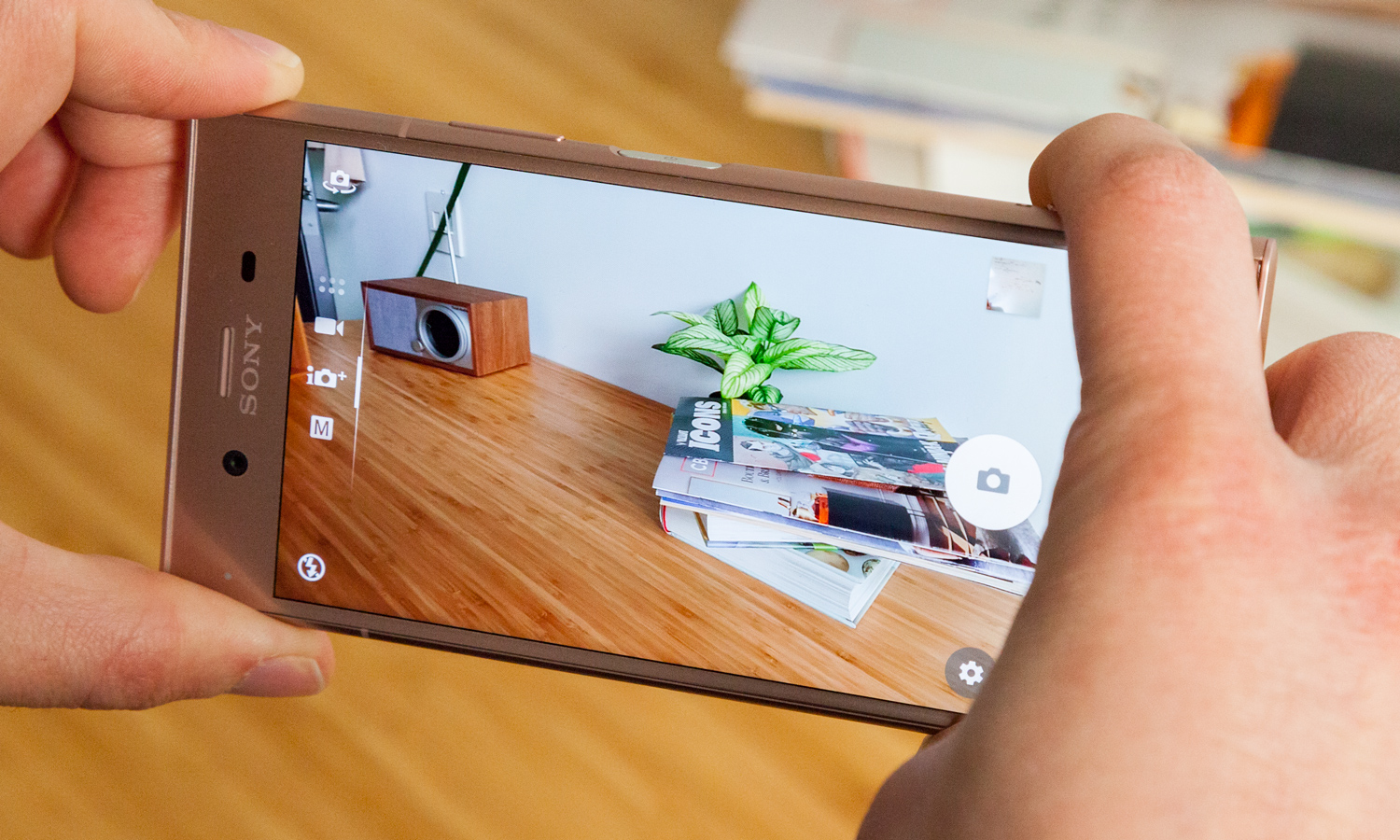
It's a bit strange for Sony to remain committed to LCD displays in smartphones considering it gave the world its very first OLED television exactly a decade ago and continues to produce them today. The XZ1's HDR-enabled screen is colorful and crisp, and like with its predecessors, you can customize this phone's display mode to get more- or less-saturated hues. But the XZ1 can't deliver the broad contrast ratio and perfect blacks that dazzle Galaxy Note 8 users or get quite as bright as the iPhone X.
The XZ1 demonstrated a peak full-screen brightness of 477 nits, compared to 574 nits for the iPhone X. Sony's phone covered 158 percent of the sRGB color space in its stock display mode and registered a Delta-E color-accuracy rating of 0.36 (where numbers closer to 0 are better). These are perfectly satisfactory numbers, but with rumors swirling that Sony will finally join the ranks of Apple, Samsung, LG and Google and toss in an OLED display on its 2018 flagships, the XZ1's screen still feels like the best of old technology, rather than where the industry is headed.
MORE: Best Smartphone Cameras 2018
Camera: Solid, but not stunning
While other phone makers have taken to giving their devices two lenses, Sony has stuck with a single camera on the back of the Xperia XZ1. It's a 19-megapixel sensor with an f/2.0 aperture and electronic image stabilization only — no optical here. For selfies, there's a 13-MP, front-facing shooter at your disposal.
The Xperia XZ1's camera app isn't loaded with a bevy of shooting modes and special features, which is actually a relief after experiencing the overly cluttered interfaces of competing flagships. We also appreciate that Sony continues to include a dedicated hardware key for the shutter, for those who prefer the precision and tactile feedback of a physical button. However, some users might lament the lack of a Portrait Mode as found on many of the latest premium phones.
Taking our unit outdoors along with the 12-MP Galaxy S8 for some comparison shots, we saw that the two phones excelled in different respects. In this first shot, inside a window-lit coffee shop on a brisk but sunny afternoon, the XZ1 had a hard time reining in the intense light falling in from the storefront. However, the phone handled the rest of the frame better than the Samsung device, with its dim exposure and grainy, fuzzy details. The Xperia's white balance also appeared more neutral.
Turning around for a close-up on some items for sale, I found that the XZ1 claimed the dimmer, noisier shot, failing to compensate for the poorly lit conditions. The Galaxy S8 bore slightly warmer colors and better exposed the entirety of the scene. And its narrower field-of-view didn't distort the edges of the frame quite as significantly.
Stepping outside the cafe, I encountered this late afternoon scene, which was challenging for both phones, mostly because of the sunlight breaking from behind the house at the left. The XZ1 maintained its cooler tint, and those extra megapixels definitely helped the phone pull out more detail down toward the horizon. But a heavy glare also clouded much of the final result. Meanwhile, the Galaxy S8's shot proved to be a bit darker overall, especially in the shadows, as seen in the porch of the blue house and the potted plant on the street corner.
Finally, the Xperia's wide-angle selfie cam delivered a clear portrait that delicately painted the sky's blue gradient in a way the Galaxy S8's 8-megapixel shooter simply couldn't, although the Sony's photo could have been a tinge brighter.
Videographers may appreciate a feature that Sony brought over from the Xperia XZ Premium. Like that phone, the XZ1 can film super-slow-motion video at 960 frames per second and 720p resolution, far smoother than the 240-fps mode in the iPhone 8 and X.
Capturing video at this speed is effortless: Simply tap a button while recording video to hone in on a specific moment. Just make sure you're shooting outdoors or in well-lit surroundings, as this mode really turns down the brightness out of the camera feed. It's a beneficial feature, but useful only in scenes with a great deal of movement.
Performance: One of Android's fastest
The Xperia XZ1 features Qualcomm's high-performing Snapdragon 835 processor to compete with other current Android flagships. The XZ1 showed no hints of lag when we put that powerful chip to use browsing the web, streaming video and playing our favorite games.
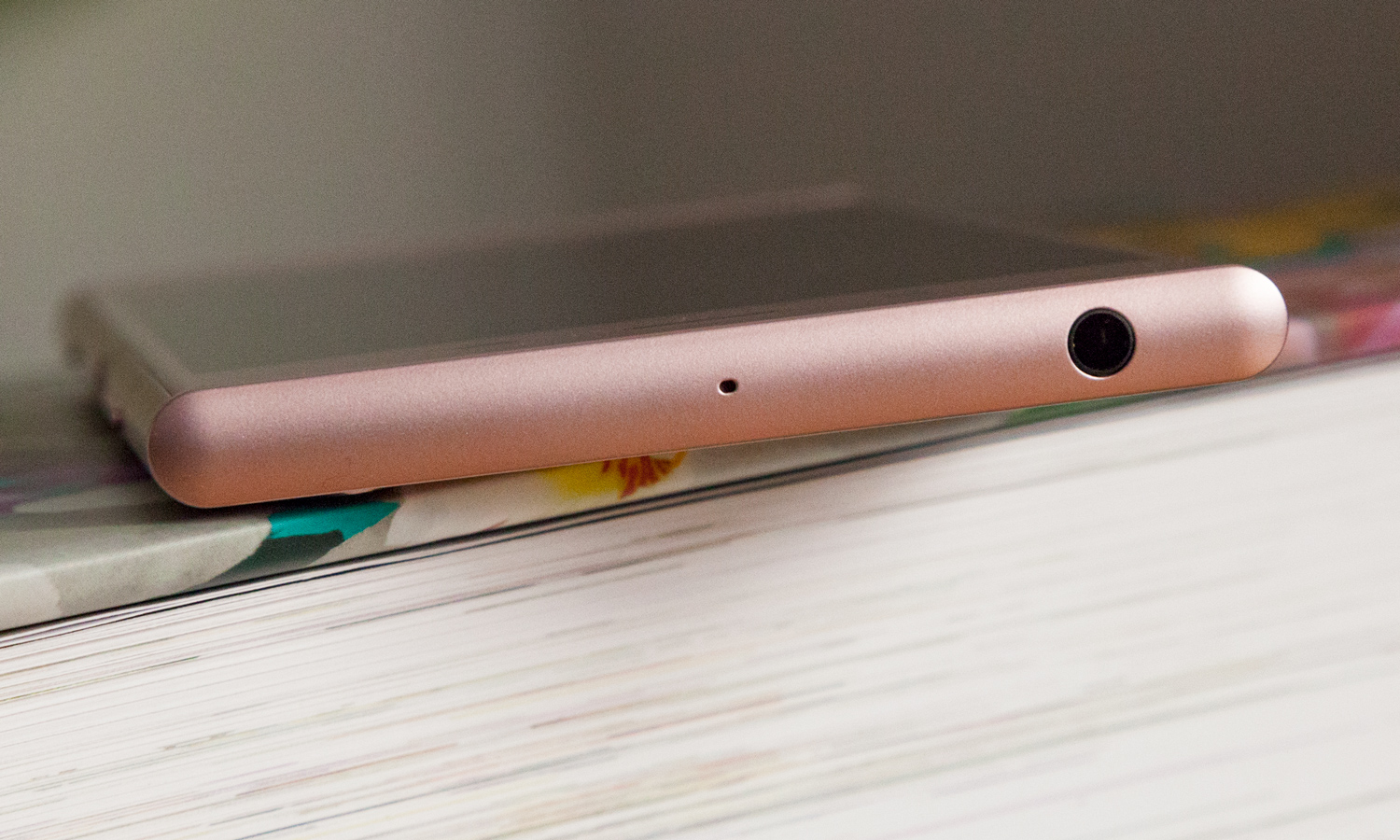
In the Geekbench 4 test for overall system performance, the XZ1 scored a whopping 6,506, outperforming the Galaxy S8 (6,295), Google Pixel 2 (6,282) and Xperia XZ Premium (6,206). The OnePlus 5T earned a slightly higher mark of 6,674, though our OnePlus review unit pulled in that score with 8GB of RAM. It's pretty impressive that the XZ1 was able to rank a close second with just half the memory.
The Xperia's web-browsing performance isn't the speediest, notching a 65.70 in our JetStream 1.1 JavaScript test. Both the Galaxy S8 (70.26) and XZ Premium (70.04) earned faster scores, though the XZ1 performed slightly better than the OnePlus 5T (62.08).
Still, Sony's latest phone dominated in our video-editing test, transcoding a 2-minute 4K video clip to 1080p using the Adobe Premiere Clip app. The XZ1 processed the file in 2 minutes and 55 seconds, which is actually dead even with the Pixel 2.
In terms of graphics, the XZ1 scored 38,730 in the 3DMark Ice Storm Unlimited test, proving that this phone can handle simpler games, like Episode and Futurama: Worlds of Tomorrow as well as more-demanding titles, like Modern Combat 5.
Battery: Look elsewhere for longevity
The Xperia XZ1 sports a 2,700-mAh battery that supports Qualcomm's Quick Charge 3.0, good for users who don't want to wait long for their phone to re-juice. The Xperia's battery also features Qnovo Adaptive Charging technology to extend the device's lifespan (unlike Apple's iPhones) and Smart Stamina, which disables nonessential apps when the battery runs down to 15 percent or lower.
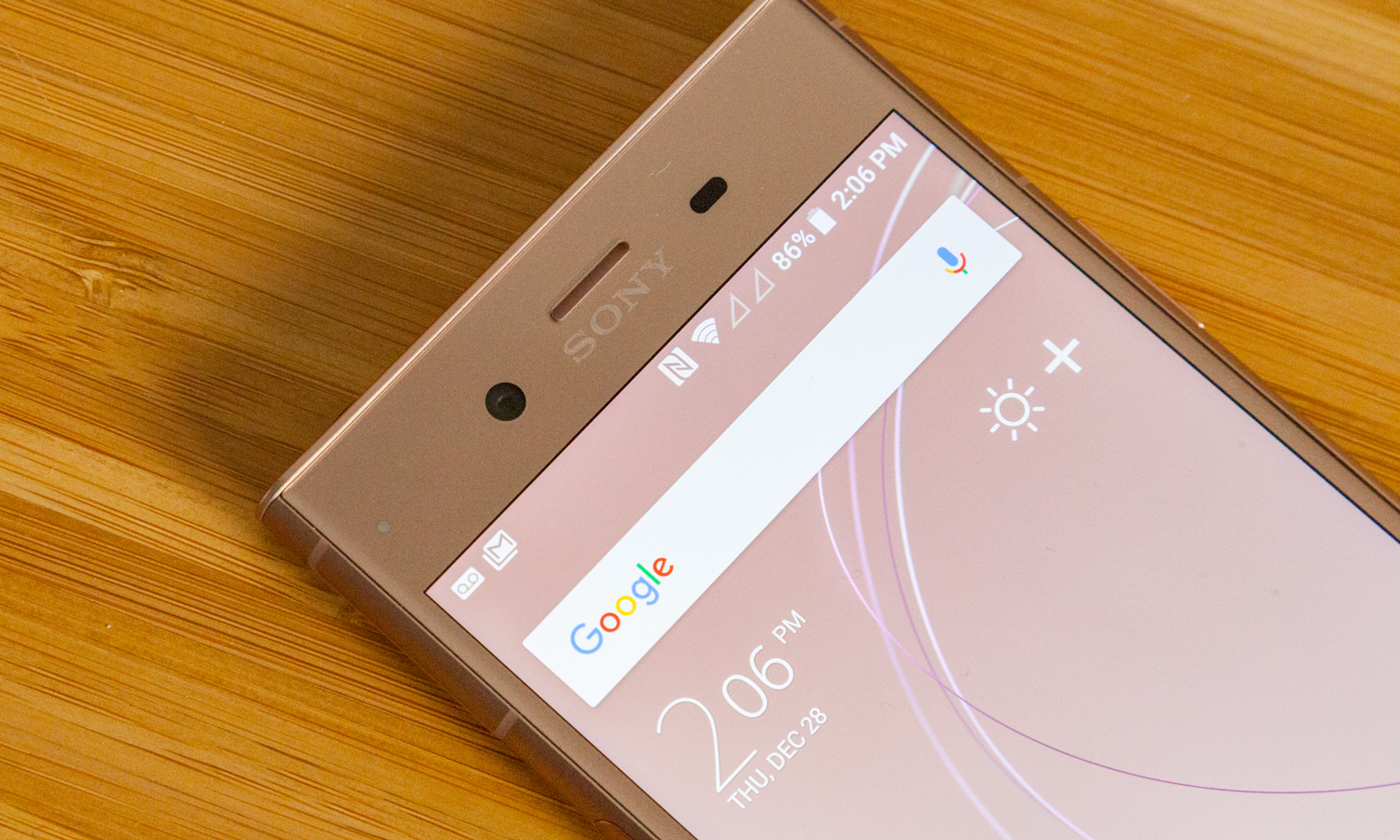
Despite all that, the phone lasted 9 hours and 45 minutes in the Tom's Guide battery test, which consists of continuous web surfing over T-Mobile's LTE network. While that showing is in line with the average result for smartphones, it doesn't compare to the times from other flagship Android phones, like the Galaxy S8 (10:39), Google Pixel 2 (11:07) and OnePlus 5T (11:22), all of which carry bigger batteries. Still, the XZ1's time improved on that of its pricier older sibling, the Xperia XZ Premium, by 23 minutes (9:22).
Software: Oreo, with some tweaks
It might seem like table stakes to launch a phone with the latest version of Android on board, but it happens less often than you'd hope. For that reason, we have to hand it to Sony for releasing the Xperia XZ1 with Android 8.0 Oreo, rather than promising an update at an undetermined future date as the overwhelming majority of phone makers have done.
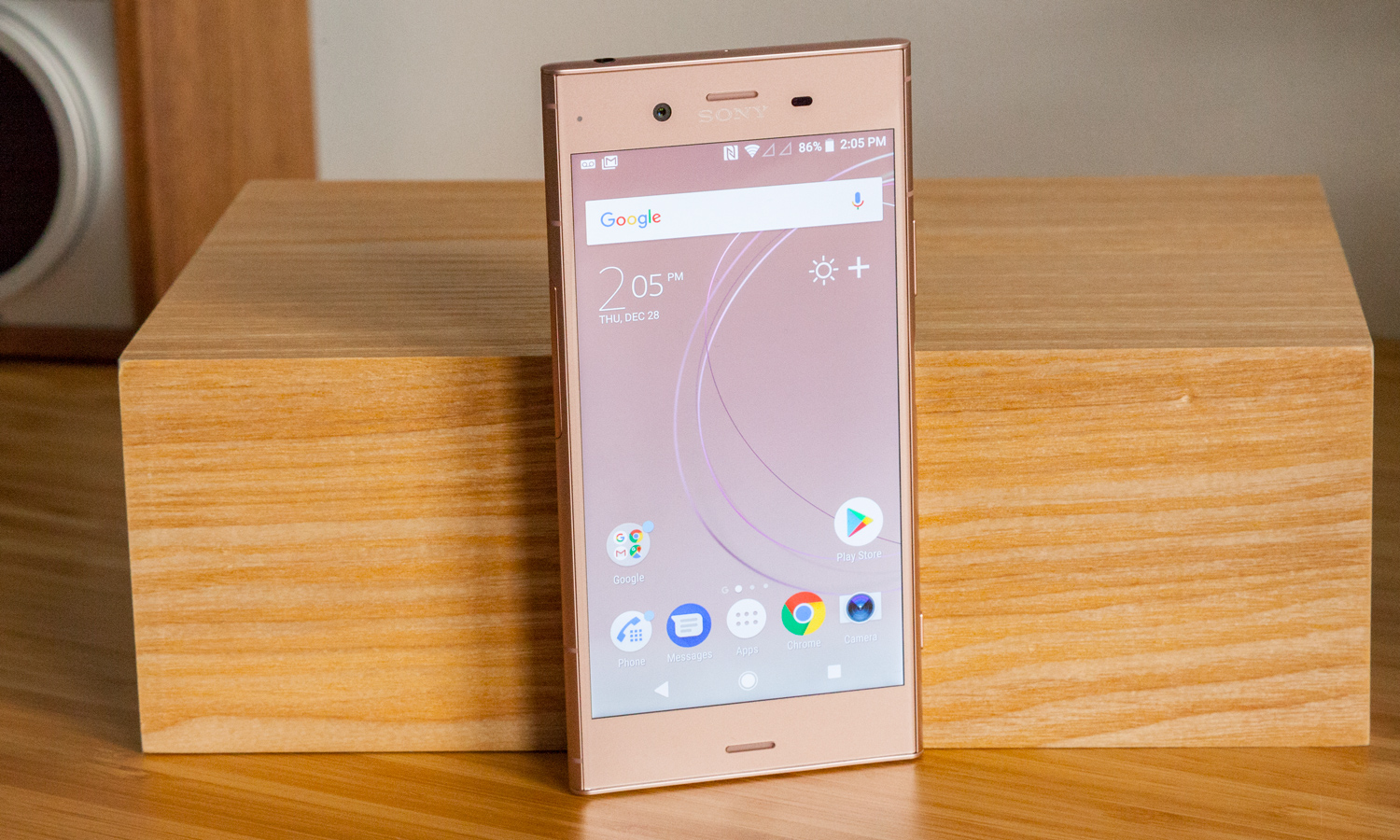
Mind you, it's not quite Oreo in its stock form. Sony has included its own launcher, which allows you to expand the grid of apps on the home screen, change the transition animations that appear between pages and even modify icon size. The XZ1 also includes Sony's stock apps, like Album, Music, Video, Sketch and Xperia Lounge, the latter of which functions as a Sony-curated collection of games, media, themes and so on. Even the Settings menu is just subtly different.
It's certainly not as much of a departure from Google's OS as you'll find in LG's or Huawei's heavily customized interfaces. But it still feels like change for the sake of change, not to mention that the interface looks quite dated, too. Much like its exterior aesthetic, the Xperia's UI has remained pretty much the same over the past three years.
However, one special feature you won't find anywhere else is Sony's 3D Creator.

This app uses the XZ1's rear camera to scan faces, food and objects, which can then be placed in photos and videos as AR models, or even 3D printed if you have the appropriate hardware or access to a 3D printing service.
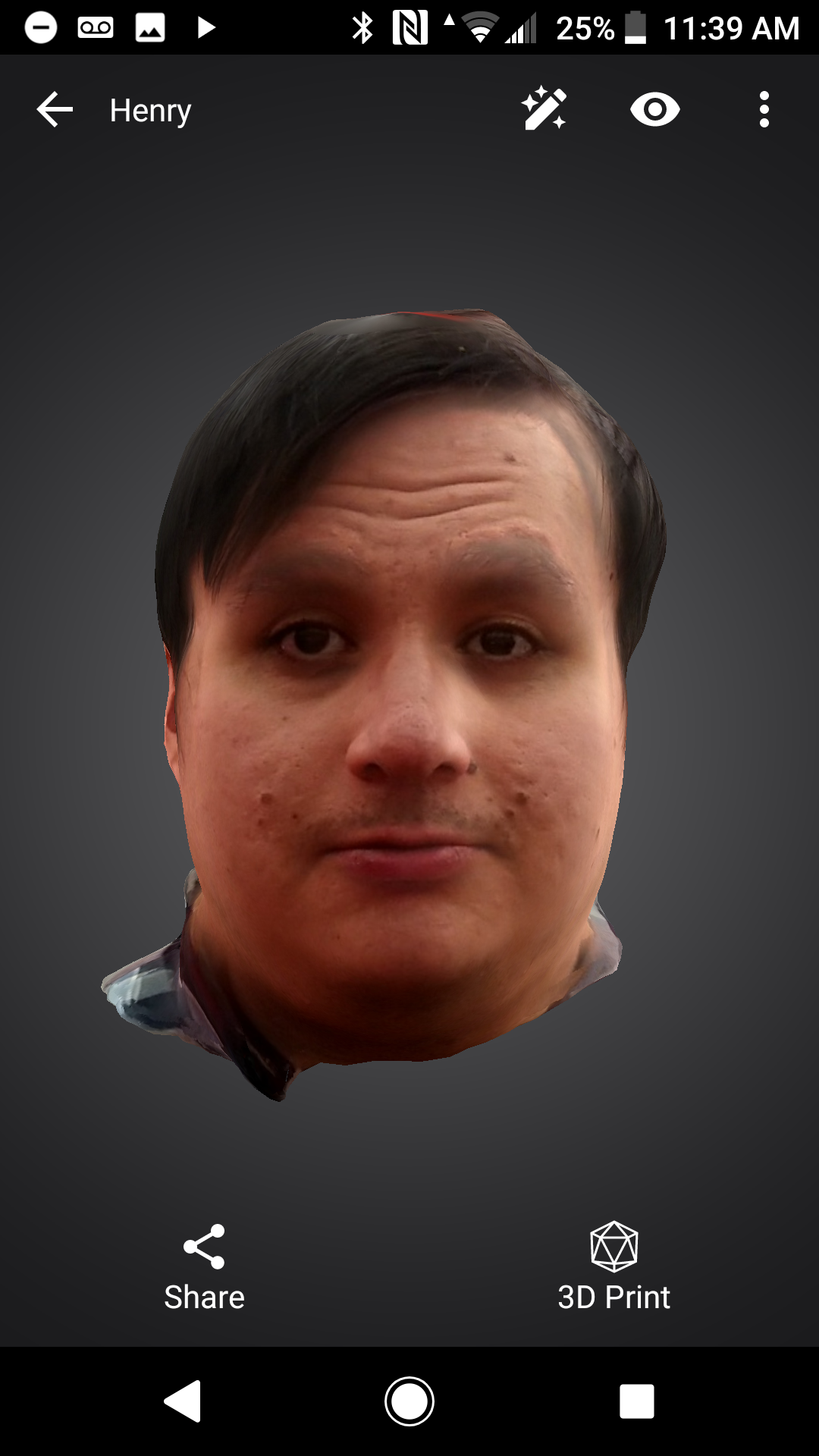
In practice, 3D Creator is hit or miss. Slowly panning a camera around a stationary object to model it is much, much harder than it sounds, especially when the object in question is extremely large or small and space is tight. But when it works, the effect is hilarious and almost magical. The app will direct you to scan a person's head first, which I quickly found was the easiest thing to scan; stuffed animals and model cars proved considerably more difficult. You'll quickly run out of things to do with a textured polygonal bust of your best friend, but it'll be a blast the first time you mess around with it.
Bottom Line
There's no Android flagship quite like Sony's latest, but in this case, that's not a particularly good thing. You must acknowledge the Xperia's processing prowess and Oreo support, but aside from that, the competition simply offers more.
The Samsung Galaxy S8 manages a larger OLED screen and a form that's easier to use with one hand. The Google Pixel 2 XL is every bit as fast as the XZ1, but it sports class-leading battery life and arguably the best camera in any smartphone today (at least, any phone that doesn't come from Cupertino). The OnePlus 5T promises more RAM, a second lens and other noteworthy benefits for hundreds of dollars less. And, of course, all three of those handsets have fingerprint sensors.
Moreover, the strides Sony has made aren't relevant to the average user. Slow-motion video recording and 3D Creator are fun and technologically exciting, but they're novelties at heart. Where it counts, the Xperia XZ1 is simply outmatched.
Credit: Shaun Lucas/Tom's Guide
Cortney Moore is a multimedia journalist whose work has appeared in many places, including Tom's Guide, Fox News, The Sun, Buzzfeed, Yahoo Finance, and more. For Tom's Guide, she's written about a range of topics, from gaming to apps and phones. Currently, she works at Fox Business Network as an associate producer/writer.

